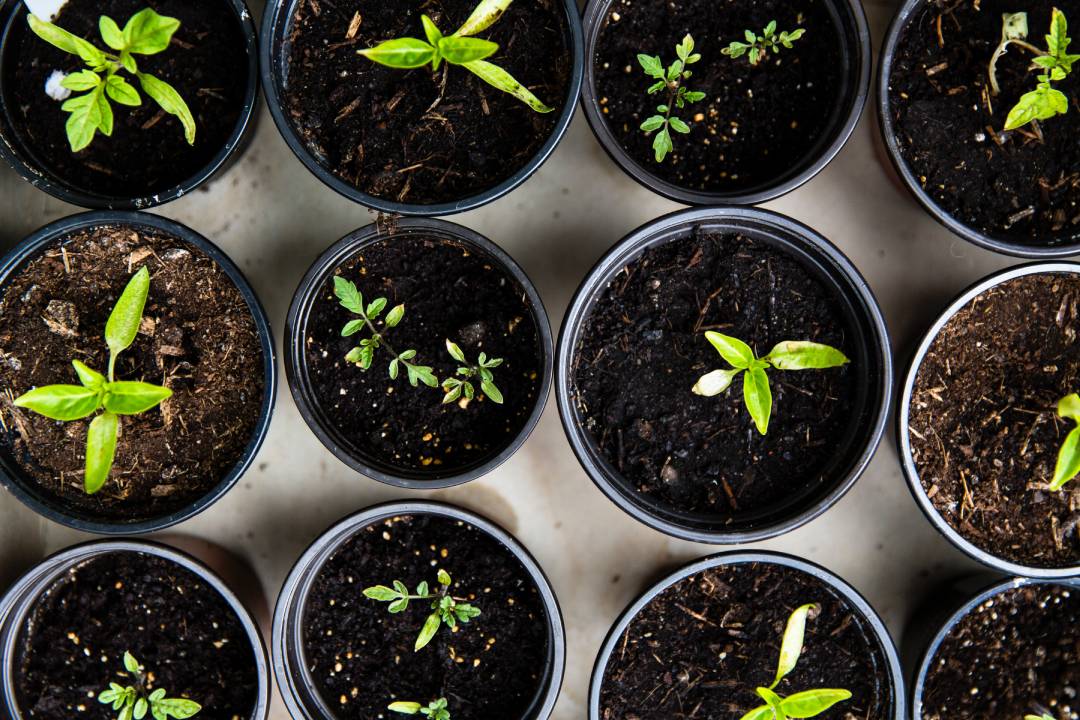Starting a garden can be a rewarding, therapeutic, and enjoyable experience, but it can also be expensive! From buying soil and seeds/starts to purchasing gardening tools and equipment, the costs can quickly add up. However, there are ways to be thrifty when starting a garden that can help you save money while still enjoying all those amazing benefits of gardening. In this post, we’ll share some tips on how to be thrifty when starting a garden.
Start with seeds instead of plants
While it may be tempting to buy fully grown plants from a garden center, it can be much more cost-effective to start with seeds instead. Seeds are much cheaper than fully grown plants, and they can also offer a wider variety of options to choose from. You can start your seeds indoors and then transplant them outside when they’re ready. This can help you save money and give you the satisfaction of growing your plants from scratch.
My recommendation is to upgrade things slowly, make sure that you enjoy the process before going out and investing in expensive lights and indoor setups. This year I am growing all of my starts in the sunniest window in my house, and while they are leggy, they are here, and with proper care, you can get the same results. It just takes a little longer.
I plan on upgrading my seed starting setup slowly. Next year, I am going to try to buy one grow light and rotate my seed trays under it to make sure they are all getting good light. I plan on amending my soils as I go to try to determine what my plants like the most or thrive with. My hope is that when I upgrade slowly and spread out the cost over a couple of years, the impact on my bottom line will be much easier to stomach.
Another great way of cutting down operating costs is that once you have found the plants you enjoy growing the most, seed saving is also an amazing way of cutting down costs. Let one or two plants go to seed and collect and store (make sure you store properly) the seeds. You can reuse those seeds next year at no additional cost to you.
Use recycled materials
Instead of buying expensive pots and planters, consider using recycled materials to start your garden. Old buckets, jars, and other containers can be repurposed as planters. You can also use old newspapers or cardboard to create biodegradable pots. This way, you won’t have to spend money on new containers, and you’ll be helping the environment at the same time.
I look around my property constantly trying to find thick branches or other resources that I can repurpose into my garden. Another great idea is finding pallets for trellis (make sure they are not treated woods). Using branches from my yard and propping pallets up gives my climbing plants an amazing trellis at a fraction of the cost of expensive pre-made trellises.
Another great resource is Facebook Marketplace or Craigslist. I am always looking for things that people are throwing away to see if I can repurpose them into my own garden. I have also had amazing luck by looking for the “buy nothing” Facebook groups. You usually have to find the one for your area as there are many, but people looking to get rid of things will post them for pickup, and I have gotten great pots for planting, wooden stakes, and even some used gardening tools.
Compost your kitchen scraps
Composting is a great way to reduce waste and create nutrient-rich soil for your garden. Instead of throwing away your kitchen scraps, you can compost them to create a natural fertilizer for your plants. You can use a compost bin or even create your own compost heap in your backyard. This can help you save money on buying expensive fertilizers and help you reduce your carbon footprint.
I am currently working to set up a three-part system for my composting, with pallets I have been trying to find for free online or when I am driving around. I want to be able to move my scraps from my kitchen to my garden and use that amazing soil to help my garden thrive. These scraps can be used for chickens if we end up taking that project on.
Save rainwater
Watering your garden can be a significant expense, especially during the hot summer months. However, you can save money by collecting rainwater to use for watering your plants. You can install a rain barrel or simply place a container outside to collect rainwater. This way, you won’t have to spend money on tap water, and you’ll be helping to conserve water as well.
There are extremely expensive rainwater collecting systems out there, but I am currently trying to retrofit my gutters to collect rainwater in a barrel to be able to use it later to water my vegetable garden. A bonus is that my garden is unfortunately further away from a water spigot than I would like. Having rain barrels decreases the amount of work I must do to try to get hoses over to the garden.
Conclusion
Starting a garden can be an enjoyable and rewarding experience, but it can also be expensive. However, by following these thrifty tips, you can save money while still enjoying the benefits of gardening. Leave me a comment with any other money-saving tips you have!





0 Comments